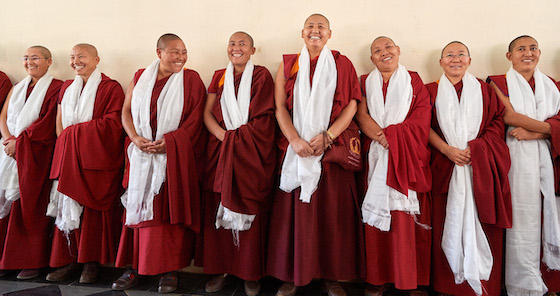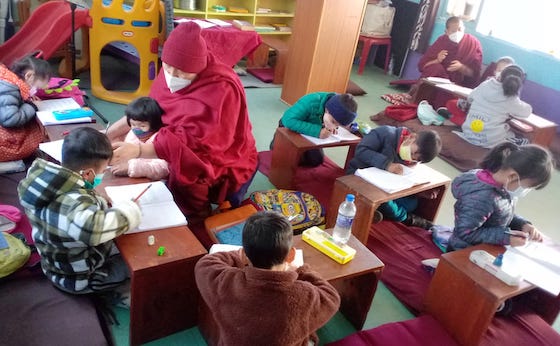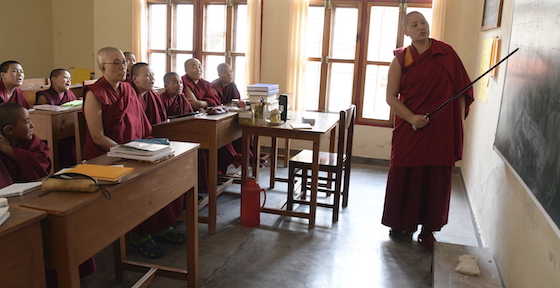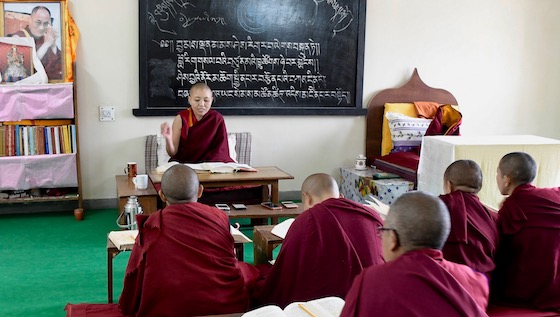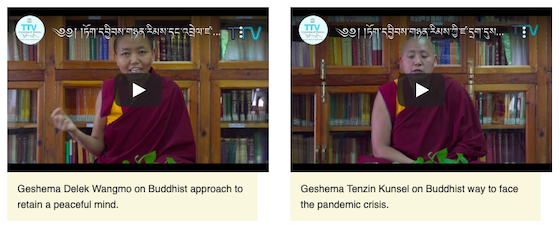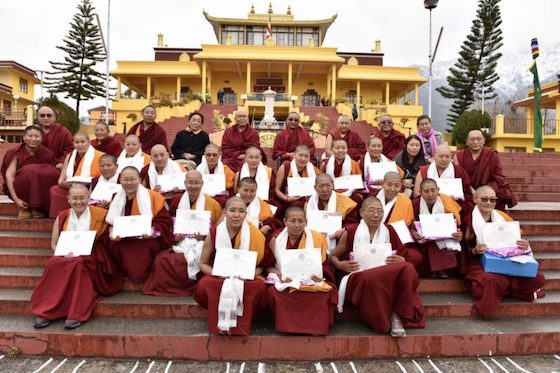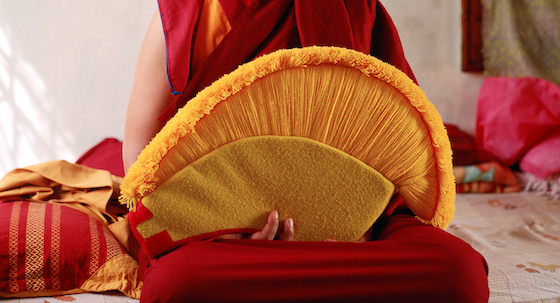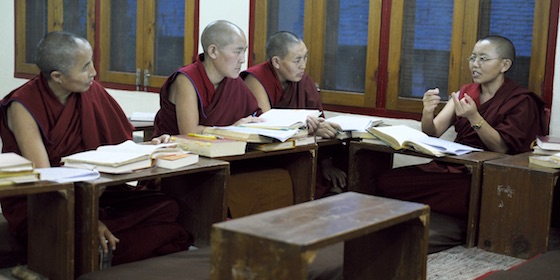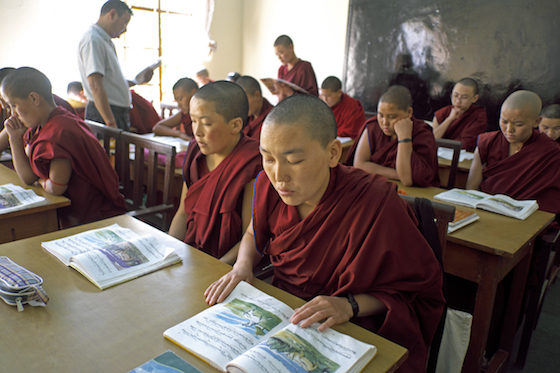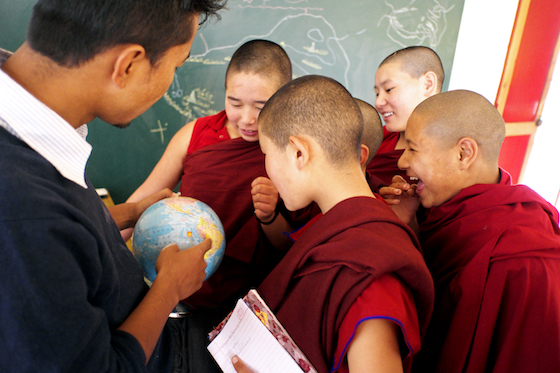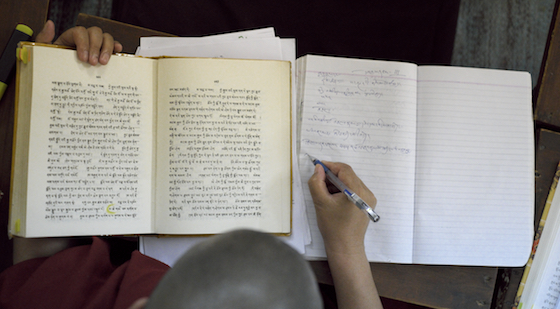Many Tibetan Buddhist nuns have been studying for decades and waiting for this opportunity. The long wait is over and the 2022 Geshema exams started on August 7th at Geden Choeling Nunnery in Dharamsala.
Thank you to everyone who sent good luck messages to the nuns! We’ve compiled all your messages and posted them at Geden Choeling for the nuns to see.
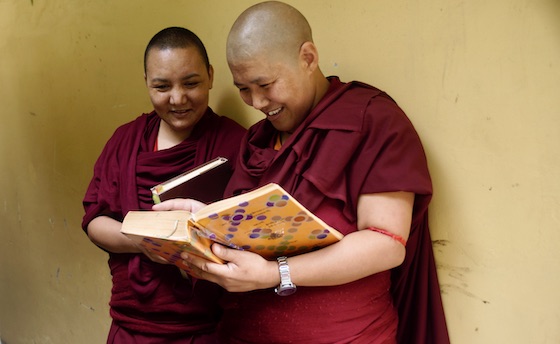
Two nuns studying in the final days before the Geshema exams start. David said in his good luck message: “I am very glad to see that the Geshema examinations will take place in 2022, and look forward to supporting the spread of female teachers in these especially treacherous times!”
The Geshema degree (known as the Geshe degree for monks) is roughly equivalent to a PhD in Tibetan Buddhism. Until recently, this degree was only open to men.
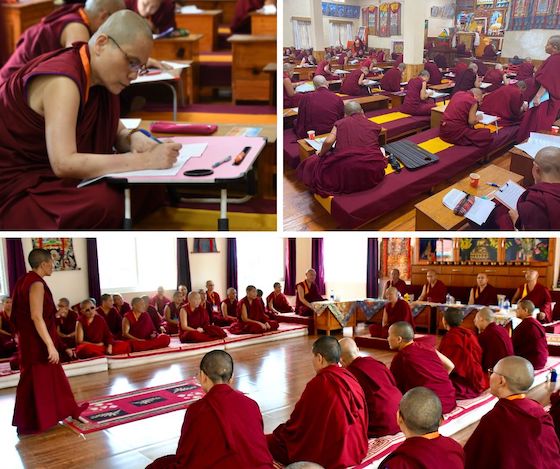
Photos by the Dolma Ling Media Nuns of the 2022 Geshema exams. To earn the Geshema degree, nuns must take both written and debate exams. The rigorous examination process involves two weeks of examinations each year for four years.
The rigorous exams take four years to complete, with one set held each year. Unfortunately, due to the pandemic, the Geshema exams were cancelled in 2020 and 2021.
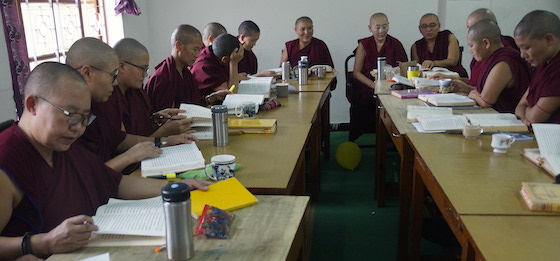
A group of nuns study during the final month of exam preparations for the 2022 Geshema exams which began on August 7th. To earn the Geshema degree, nuns must successfully complete four years of written and debate exams as well as write and defend a thesis.
Candidates are examined on the entirety of their 17-year course of study of the Five Great Canonical Texts. They must achieve a score at least 75 per cent during their studies to be eligible to sit for the Geshema exams.
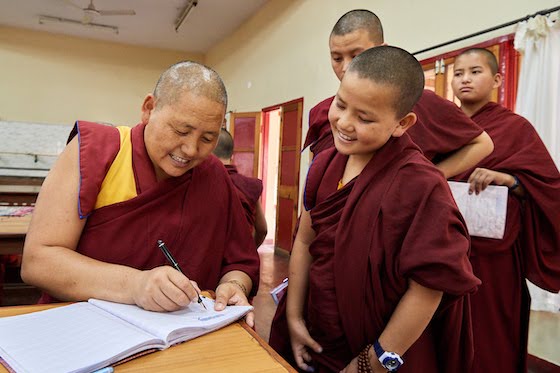
Geshema Tenzin Kunsel is one of two Geshemas now teaching at Dolma Ling Nunnery and Institute, a large non-sectarian nunnery that is home to about 250 nuns. Traditionally, Buddhist nuns have not had the same access to education as monks. Photo courtesy of Olivier Adam
The Geshema degree was only formally opened to women in 2012 and nuns began taking Geshema exams in 2013. In 2016, 20 Tibetan Buddhist nuns made history when they became the first Tibetan women to earn Geshema degrees.
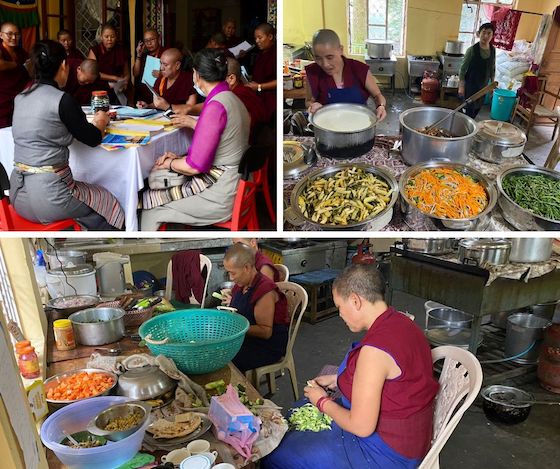
Behind the scenes at the 2022 Geshema exams captured by the Dolma Ling Media Nuns. The new Geshema Endowment at the Tibetan Nuns Project funds all costs associated with the exams including food, travel, exam materials, and graduation robes.
Here’s a list of the Geshema graduations since the formal approval in 2012:
- 2016: 20 nuns became Geshemas
- 2017: 6 nuns graduated as Geshemas
- 2018: 10 nuns became Geshemas
- 2019: 7 nuns graduated at the end of November
- 2020: exams cancelled due to the pandemic
- 2021: exams cancelled due to the pandemic
In his good luck, Robert said, “Dear Geshema candidates, I have thought of you many times since I became aware of your studies and intent to earn your Geshema degree. You have accomplished an extraordinary amount to have come this far. I wish you all peace of mind and good health as you take your exams. You are trailblazers already, and I would be incredibly honored to learn from you, whether or not you achieve the Geshema degree. That said, may you all find great success in achieving the degree so that more people may have the opportunity to learn from you. Congratulations on all your achievements so far in being ready to sit the exams — all of you inspire me so much and motivate me to practice harder. Thank you!”

The candidates assembled on July 6th for a month of final exam preparations. Photo courtesy of the Dolma Ling Media Nuns
Some Facts About the Geshema Degree
- The Geshema Degree is roughly equivalent to a doctorate in Buddhist philosophy. For males, it is called the Geshe degree.
- It is the highest level of training in the Gelugpa school of Tibetan Buddhism.
- Until recently, this highest degree could only be earned by monks.
- To qualify to begin the Geshema process, nuns must score 75% or above in their studies to be eligible to sit for the Geshema exams.
- On December 22, 2016, His Holiness the Dalai Lama awarded 20 Tibetan Buddhist nuns with Geshema degrees at a special graduation ceremony held at Drepung Monastery in Mundgod, South India.
- In 2011, a German nun, Kelsang Wangmo, who spent 21 years training in India, became the first woman to receive the Geshe degree. This was before the Geshema degree process was approved in 2012.
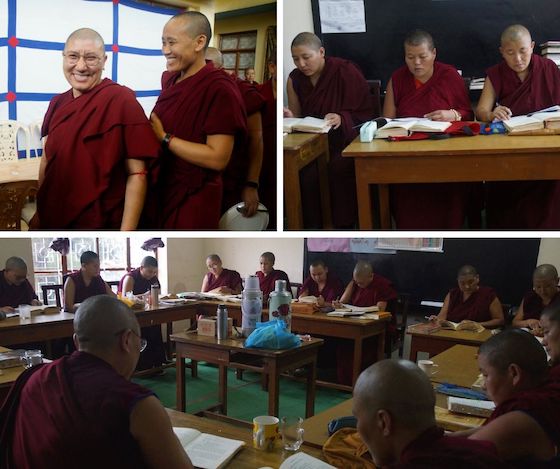
Joy at the opportunity to take the Geshema exams. Thank you for your messages of good luck! Photos courtesy of the Dolma Ling Media Nuns

